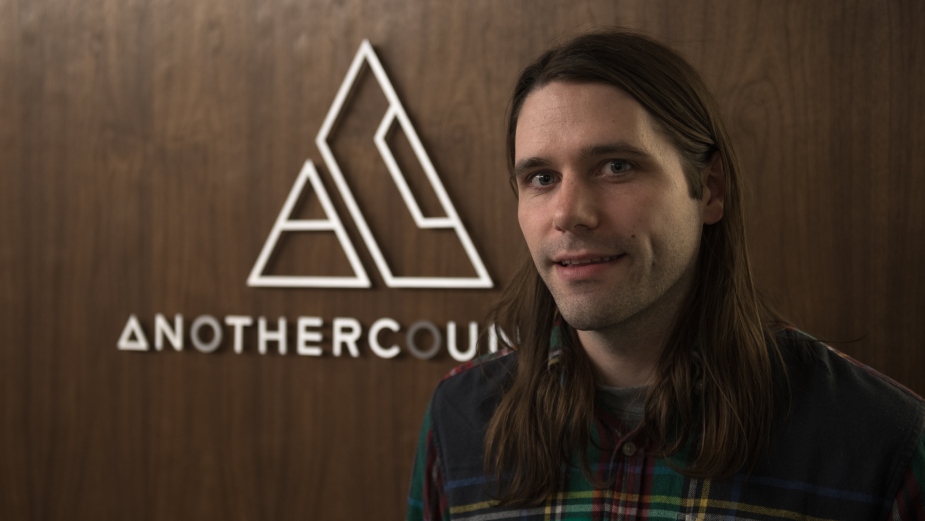
Thinking in Sound: Why Patience Is Important with Jordan Stalling

Jordan Stalling joined Another Country in May, 2019, as sound designer/mix engineer. He spent the previous six years with Comma Music, where he began as an assistant engineer and rose to the sound designer mixer position in 2018.
Winner of "The Lev" International Grand Prize in Sound Design in the Camp Kuleshov competition in both 2016 and 2017, Stalling has distinguished himself professionally through his considerable talents in audio engineering and music composition. His credits include work for Porsche, NHL, Coors, and Guaranteed Rate.
LBB> When you’re working on a new brief or project, what’s your typical starting point? How do you break it down and how do you like to generate your ideas or response?
Jordan> It definitely varies from project to project, but when it’s called for, I try to nail down what the piece is hoping to achieve. Then I think about what the role of sound should be in reaching that goal.
LBB> Music and sound are in some ways the most collaborative and interactive forms of creativity - what are your thoughts on this? Do you prefer to work solo or with a gang - and what are some of your most memorable professional collaborations?
Jordan> I think collaboration is often essential to keeping creative projects interesting. It’s not only a way to learn from the different skill sets of others, but a chance to find out what is and isn’t working collectively, ultimately hearing that in the end result.
I recently had an opportunity with the folks at Digitas to create a spatial listening experience for Ascend, the largest Pan-Asian business professional membership organisation in North America. The project, called Sound of the Other Side, was created to draw attention to the discrimination and stereotypes Asians and Pacific Islanders are subjected to in professional settings on a daily basis. We showcased member interviews and created sonic environments to immerse the listener into each storyteller’s experience. It was super rewarding to work with the team to help shine a light on such a prevalent issue.
LBB> What’s the most satisfying part of your job and why?
Jordan> I remind myself how fortunate I am to do this every day and that’s a continuous source of fulfillment. I have the opportunity to work alongside and learn from a lot of creative minds, which makes for an exciting and engaging day-to-day.
LBB> As the advertising industry changes, how do you think the role of music and sound is changing with it?
Jordan> I think the increasing amount of content people consume allows more opportunities for music and sound to be a driving force. It’s exciting to see newer avenues like TikTok emerge where people are almost exclusively using the app with the sound on, versus rushing for the mute button.
LBB> Who are your musical or audio heroes and why?
Jordan> Skip Lievsay, who works on all of the Coen Brothers’ films, has always been my favourite in the sound world. He adds so much to everything he works on and can make the seemingly simplest of sounds steal the show. For music, I’m in awe of pretty much everything Blake Mills does as an artist and engineer.
LBB> And when it comes to your particular field, whether sound design or composing, are there any particular ideas or pioneers that you go back to frequently or who really influence your thinking about the work you do?
Jordan> This falls more under the ideas portion of the question, but when I was young and would complain while being dragged along grocery shopping or to the mall, my Mom would ask “What are we practicing?”, the correct response being “Patience”.
I try to keep that in mind when struggling to get a mix sounding right, or working on more tedious aspects of the job. Thanks, Mom.
LBB> When you’re working on something that isn’t directly sound design or music (lets say going through client briefs or answering emails) - are you the sort of person who needs music and noise in the background or is that completely distracting to you? What are your thoughts on ‘background’ sound and music as you work?
Jordan> I definitely prefer silence when answering emails or reading - music steals my focus too easily. I also annoyingly finger tap/drum to music, so it’s only a matter of time before I’m working out hi-hat patterns on the desk instead of processing the words in front of me.
LBB> I guess the quality of the listening experience and the context that audiences listen to music/sound in has changed over the years. There’s the switch from analogue to digital and now we seem to be divided between bad-ass surround-sound immersive experiences and on-the-go, low quality sound (often the audio is competing with a million other distractions) - how does that factor into how you approach your work?
Jordan> QC’ing mixes on a variety of speakers is as important as it’s ever been. I put trust in my ears and listening environments and just try to be proud of each mix that goes out the door.
LBB> On a typical day, what does your ‘listening diet’ look like?
Jordan> I have a pretty (un?)healthy listening diet of comedy podcasts that are usually playing while I’m getting ready for the day. I’ll typically switch to music when cooking dinner.
LBB> Do you have a collection of music/sounds and what shape does it take?
Jordan> Being home so much over the past few years has definitely led to more vinyl listening, so my collection has grown quite a bit. I like picking out a stack of albums and making a soundtrack for a relaxing weekend morning or just cleaning up around the apartment.
LBB> Outside of the music and sound world, what sort of art or topics really excite you and do you ever relate that back to music (e.g. history buffs who love music that can help you travel through time, gamers who love interactive sound design… I mean it really could be anything!!)
Jordan> Running is a big hobby of mine, and I’ve become a fan of leaving my headphones at home. I run along an elevated trail called The 606 in Chicago, and love taking in the city soundscape given how unique that can be to each day. It’s also a nice, quiet contrast for my ears before working with audio all day.
LBB> Let’s talk travel! It’s often cited as one of the most creatively inspiring things you can do - I’d love to know what are the most exciting or inspiring experiences you’ve had when it comes to sound and music on your travels?
Jordan> My fiancée and I were able to take a trip to Ireland earlier this year. We stayed above a pub in Dublin for a few nights and unsurprisingly found ourselves having drinks there often. One afternoon, a few tables of family and friends were toasting to a regular who had passed. One of the men began singing an Irish Folk tune, and many soon joined in. Ireland was fresh out of a lengthy lockdown, and you could tell it meant a lot for this group to be together, even if it wasn’t for the most joyous of occasions. It was a special reminder of how powerful music can be, and the different ways it brings us together. A lot of emotions at once.
LBB> As we age, our ears change physically and our tastes evolve too, and life changes mean we don’t get to engage in our passions in the same intensity as in our youth - how has your relationship with sound and music changed over the years?
Jordan> Growing up playing music, or later when first getting interested in post-production audio, I would seek out the most extreme expressions of each craft. Whether it was impossible to follow Math-Rock or the most explosive and intense sound design, I was all ears (sorry). As I’ve gotten older I’m more impressed by work that conveys those intricacies by saying more with less.













